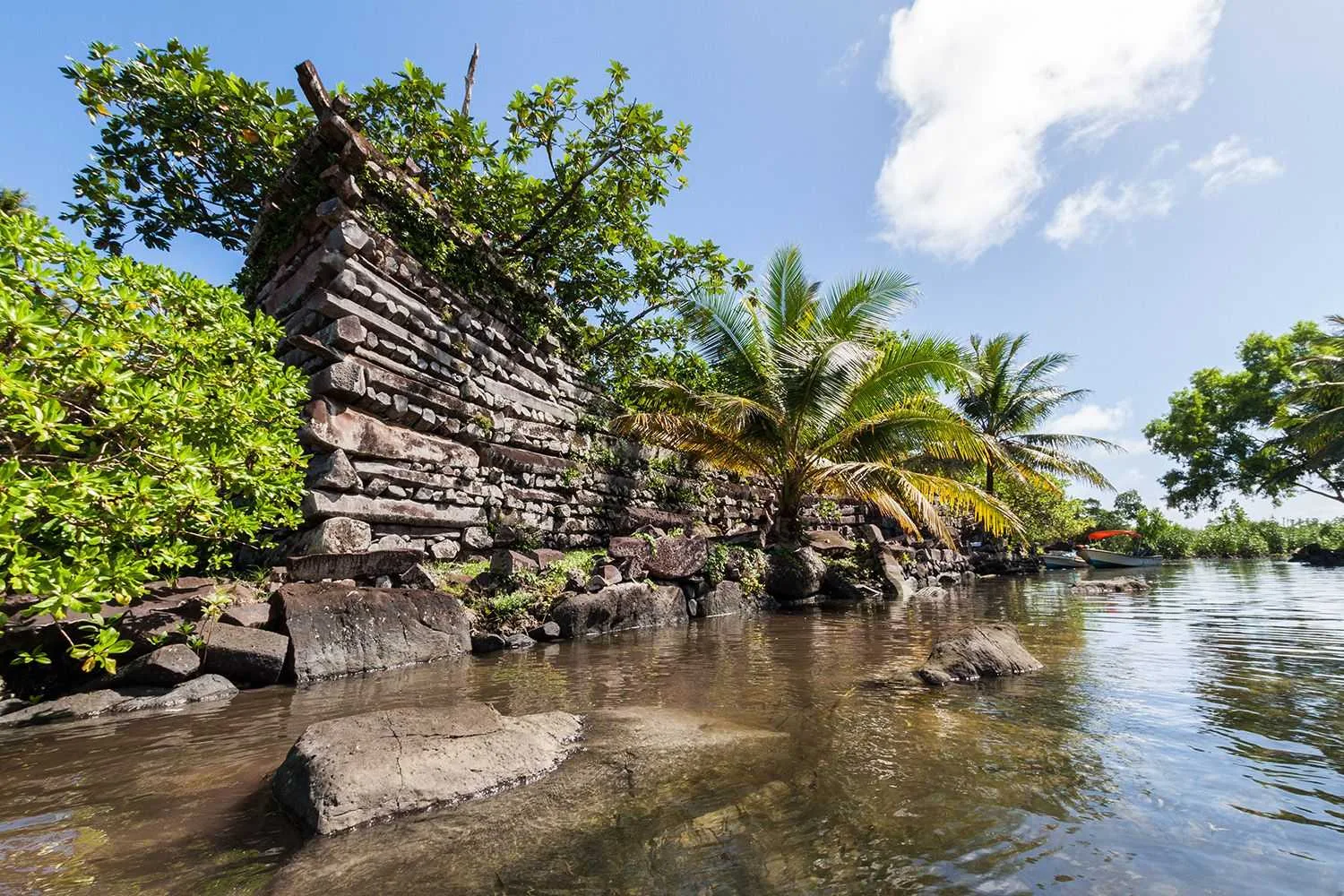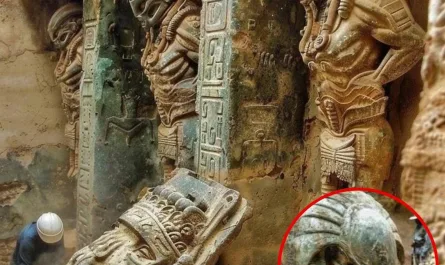Imagine a city built not on natural land, but on over 90 artificial islands, interconnected by a labyrinth of canals. A city constructed from colossal basalt columns, some weighing many tons, meticulously stacked without mortar to form majestic temples, elaborate tombs, and even living quarters. This isn’t a scene from a fantasy novel; this is Nan Madol, the ancient capital of the Saudeleur Dynasty, nestled on the eastern shores of Pohnpei Island in Micronesia.

A City on Water: The Venice of the Pacific
Often described as the “Venice of the Pacific,” Nan Madol earns its nickname through its extraordinary design. Instead of streets, canals serve as the primary thoroughfares, allowing canoes to navigate between the various islets. This intricate network speaks to a sophisticated understanding of marine engineering and urban planning by its ancient builders. The city was strategically built in a shallow lagoon, protected from the open ocean by a coral reef, creating a tranquil and defensible stronghold.

The Megalithic Mystery: Stones That Defy Logic
The most striking feature of Nan Madol is undoubtedly its construction material: massive, naturally prismatic basalt logs. These enormous stones, some reaching lengths of 25 feet and weighing up to 50 tons, were quarried from distant parts of Pohnpei and somehow transported to the construction site.
This is where the true enigma begins. How did the Saudeleur people, without the aid of wheels, pulleys, or beasts of burden, manage to move and precisely place these gargantuan rocks? Theories range from complex leveraging systems and rafts to more mythical explanations involving magic and supernatural powers, as local legends sometimes suggest. Regardless of the method, the sheer scale and precision of the stonework are a testament to an advanced level of engineering and an incredible communal effort that remains a subject of intense study and wonder today.

A Center of Power and Spirituality
Nan Madol was more than just a marvel of engineering; it was the vibrant political and religious heart of the Saudeleur Dynasty, which ruled Pohnpei for centuries. The various islets served distinct purposes: some were royal residences, others housed priests, and many contained elaborate burial sites for the elite. The city’s design reflects a hierarchical society, with the central islets reserved for the most powerful figures.
The End of an Era
The Saudeleur Dynasty eventually fell, and Nan Madol was abandoned, though its exact decline remains somewhat shrouded in mystery. Over time, the jungle began to reclaim its territory, and the canals slowly silted up. Yet, even in its overgrown state, the monumental ruins continue to evoke a powerful sense of awe and intrigue.

A UNESCO World Heritage Site
Recognizing its immense historical and archaeological significance, Nan Madol was designated a UNESCO World Heritage Site in 2016. Efforts are ongoing to preserve this unique site, protect it from environmental degradation, and continue research into its many unanswered questions.
Nan Madol stands as a silent, stony testament to a forgotten civilization’s ingenuity and ambition. It invites us to ponder the limits of ancient capabilities and the mysteries that still lie hidden beneath the waters and jungle of Micronesia.
Have you heard of Nan Madol before? What do you find most astonishing about this ancient city? Share your thoughts in the comments below!





